
© Johan Persson, courtesy the Royal Opera House. (Click image for larger version)
Royal Ballet
Alice’s Adventures in Wonderland
★★★✰✰
London, Royal Opera House
27 September 2017
Gallery of pictures (Akane Takada cast) by Dave Morgan
www.roh.org.uk
Christopher Wheeldon’s Lewis Carroll tribute, created in 2011 for the Royal Ballet, has been taken up by other companies as a family-friendly spectacle – a success for a ballet based on a surreal Victorian children’s story. Lauren Cuthbertson, who reprises her original role as Alice at the start of the Royal Ballet’s new season, had just performed it with the Australian Ballet in Melbourne. Alice may serve as a 21st century alternative to the ubiquitous Nutcracker, though I can’t imagine Joby Talbot’s delirious score being piped as muzak in stores at Christmas time.
He and Wheeldon’s team of collaborators have transformed an episodic, wildly illogical tale into a love story – a balletic rite of passage for Alice from playful girlhood to grown-up girlfriend. Like The Sleeping Beauty’s Aurora, her experience spans a century (or more) from prologue to happy-ending epilogue. En route, Alice undergoes trials in dreams and nightmares, mostly involving transmogrified figures from her family’s life.

Seeing the ballet more than once helps identify guests at the Liddell ‘s garden party in the prologue who turn into Wonderland characters. (Peter Wright uses the same device in his production of The Nutcracker for the Royal Ballet.) Some are easy to spot: Lewis Carroll as the White Rabbit; the Indian rajah as the Caterpillar; the manic party entertainer with the top hat; the dowager pushing a pram who becomes the baby-abusing Duchess: hyper-controlling Mrs Liddell as the psychotic Red Queen.
Others are less familiar: the vicar as the March Hare, the verger as the Dormouse, the butler as the Executioner. They and others from the party also appear as drenched contestants in the caucus race in Act I, a meaningless sequence (without Carroll’s words) that could well be cut. It’s simply bewildering as the first big number in the ballet, and there’s no dancing involved. We have to wait until the end of Act II for a lavish ballabilé of waltzing flowers.
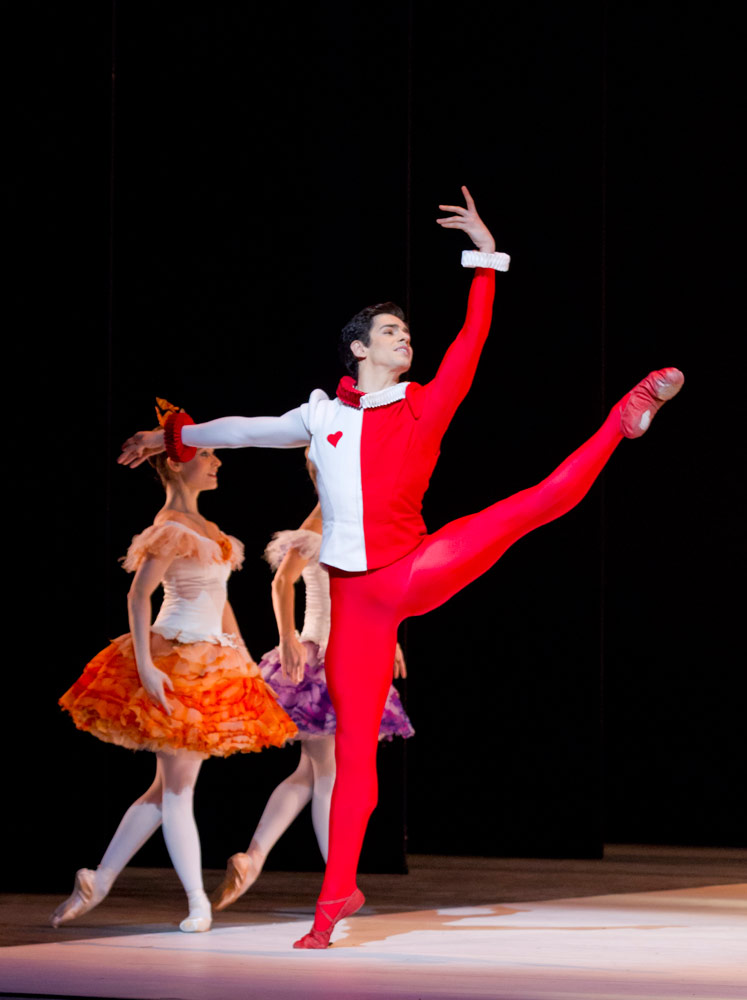
© Johan Persson, courtesy the Royal Opera House. (Click image for larger version)
Most of Act I involves stunning effects by the projection designers, Jon Driscoll and Gemma Carrington, together with Bob Crowley’s sets and costumes. Puppet Alice tumbles down the White Rabbit’s vertiginous hole; human Alice (Cuthbertson) is thwarted by changes of scale as she tries to find her way into a locked garden. She is in search of Jack (Federico Bonelli), the gardener’s boy, who has turned into the Knave of Hearts. The prologue makes clear that they are already an item. The rest of the three-act ballet is really their extended pas de deux, interrupted by bizarre incidents, until they can finally be together.
There is life-threatening violence in this story for children, as the Knave of Hearts flees the vengeful Red Queen, her guards and executioner. Their arrival is always announced by the blare of a scary siren, warning of danger. Before facing up to the Queen, Alice encounters an angry cleaver-wielding cook (Kristen McNally) in her Hell’s Kitchen, fighting with the Duchess (Gary Avis), whose porcine baby becomes a string of sausages. It looks as though Alice will be next for the chop, until she is rescued by the White Rabbit, her Lilac Fairy (Edward Watson).

© Johan Persson, courtesy the Royal Opera House. (Click image for larger version)
As in The Sleeping Beauty, a time-out scene enables hero and heroine to dance together in a vision of future bliss before undergoing further trials. Wheeldon calibrates each pas de deux to reveal the blossoming romance (complete with red rose) between the youngsters, without resorting to eroticism. We know little about them in dance terms, however, until quite late on in the ballet. Jack is on the run, and Cuthbertson’s Alice is pre-occupied with finding her way in Act I, spinning in confusion, still girlish.

© Johan Persson, courtesy the Royal Opera House. (Click image for larger version)
At the start of Act II she finally has a solo with distinctive gestures of wonderment and resolution. Alice is marked out as different from her two sisters in a delightful trio, and she has an endearing relationship with the elusive Cheshire Cat. She’s a bystander, though, at the Mad Hatter’s tea party, with its music hall routines, expertly tapped by Steven McRae as the Hatter. Fernando Montaño mesmerises her as the magic mushroom Caterpillar in a sequence that, like the Arabian dance in The Nutcracker, goes on too long.
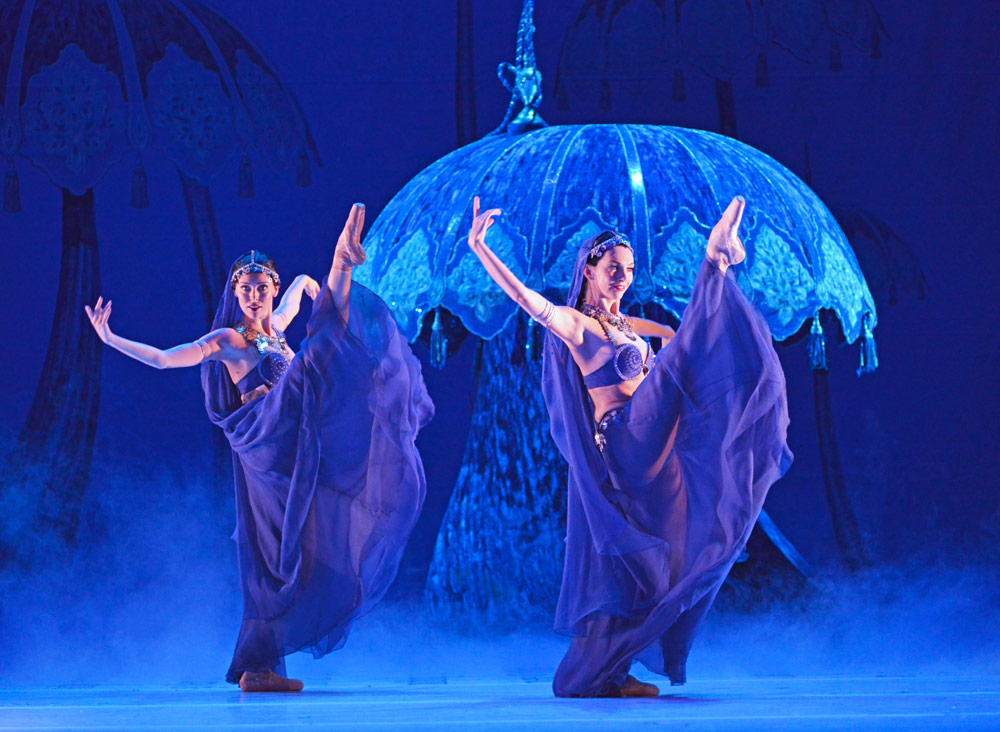
© Dave Morgan, courtesy the Royal Opera House. (Click image for larger version)
Talbot’s music becomes overly descriptive in Act II, though he has fun with a Tchaikovsky-inspired Valse des Fleurs for the ballabilé, with Alice and Jack at its heart. Talbot has devised motifs for the main characters, with certain instruments associated with each one. Though his score is lyrical for the duets, it becomes overwhelming, understandably, by Act III, with the mayhem of the croquet game and the trial of the Knave of Hearts.
The scenario for Act III is so packed with incident that it’s almost impossible to follow. Gardeners and topiary rush about; playing cards mingle with flamingos and hedgehogs; the Red Queen sends up the Rose Adagio, terrorising her court. Arbitrary characters gang up to denounce the Knave. Somehow there’s time for belated solos: Watson wistful as the White Rabbit/Lewis Carroll; Bonnelli elegant and yearning as the Knave – very Des Grieux; Cuthbertson defiant as Alice defending Jack.
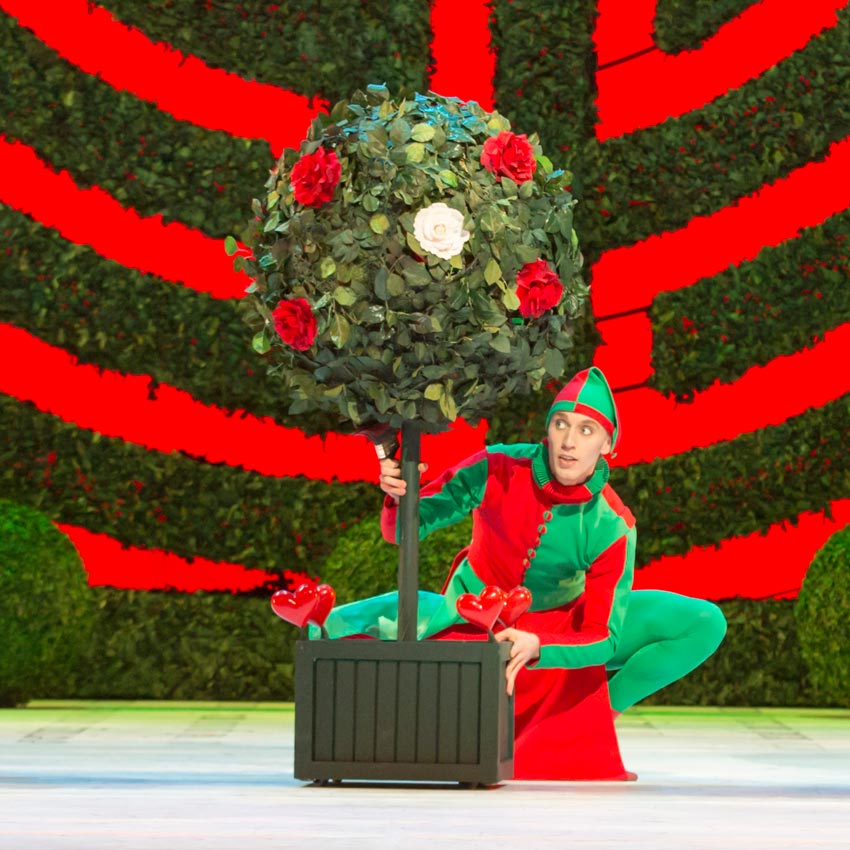
© Johan Persson, courtesy the Royal Opera House. (Click image for larger version)
Alice and Jack have a last pas de deux, declaring their love and Jack’s innocence. Given the context of an unfair death-sentence trial, the culminating duet still can’t be erotic – or ecstatic. Yes, the two would-be lovers have matured during the course of the ballet, but their relationship doesn’t exactly send thrills down the spine. Nor does their peril, since the fantastic house of cards collapses when Alice’s dream is finally over.
The epilogue doesn’t quite take place in the present day. A camera and a book are involved, instead of a smart phone and selfie stick. But the twist in the tale makes a charming finale. Wheeldon and his scenarist, Nicholas Wright, have made theatrical sense of a nonsensical children’s classic. This Alice, though, is a modern pantomime, not a classic ballet. Wheeldon’s choreography is anodyne, unrevealing of character in spite of fine performances by dancers making the most of what they are given. Compare, for example, the dormouse/verger (Romany Pajdak) with Ashton’s dancing mice in his Tales of Beatrix Potter; or the frog footman (David Yudes) with Ashton’s Jeremy Fisher. Alice, in its three-act form, is overblown, in need of pruning.

© Johan Persson, courtesy the Royal Opera House. (Click image for larger version)
Having seen the 2011 and 2014 productions before, with much the same cast, I came away admiring the staging, humming the effects and Talbot’s tunes, and pitying the supporting dancers. For other viewers, though, with different expectations of what ballet can be, the experience may be more rewarding. At least the Royal Ballet now provides the vital synopsis free with the cast list – though the articles in the £7 programme are well worth reading.












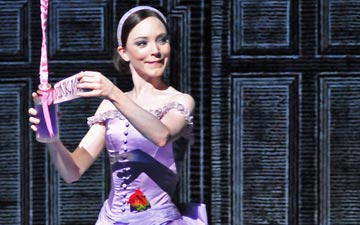


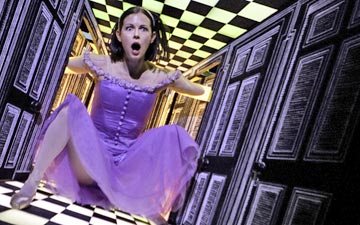

You must be logged in to post a comment.